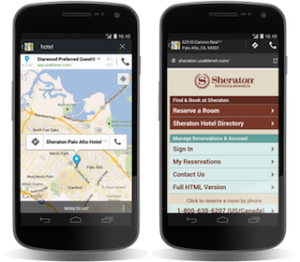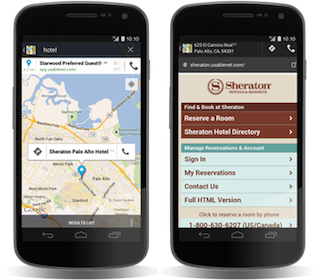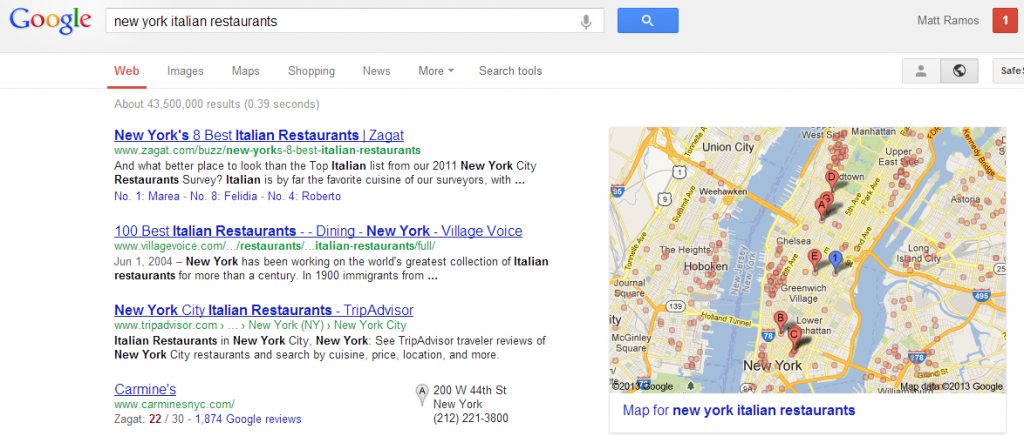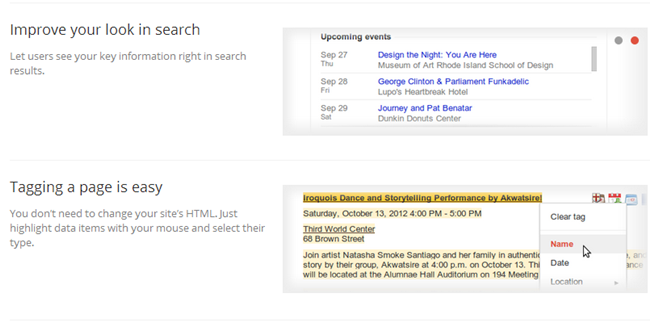
Google announced recently that they are updating their mobile product by redesigning ads in Google Maps. This roll out happened for all users on June 22, 2012. This change will increase click-through rates by 100% says ad tests conducted through T-Mobile USA, and the case study from use of the service can be found here.
When searching for a specific location, the map will feature larger more clickable buttons to place calls or find directions. Instead of a website link that opens a separate browser page, the site will load within the map. The update will include a blue hyperlocal marker showing the distance between you and nearby businesses.
Google Maps provide a great opportunity for advertisers where 94% of smartphone users search for local business information. And 90% of them make decisions based on the results of that mobile search.
Google announced: “The visual redesign will be rolling out today to the newer versions of Android phones”. This statement is pretty vague when defining new Android phones. Which version of the OS is considered new? In a blog post a Google spokesperson stated “new” is considered any phone running Gingerbread or Ice Cream Sandwich.
In a previous blog post we wrote about Google’s integration with location and mobile. We also showed how to accurately list your information using Google AdWord’s Location Extensions that allow you provide an address, website, email, phone number etc. with your Google Ads. Read this blog for best tips and practices when using location extensions.
 You can see the new layout in the accompanying photo. It features a blue hyperlocal marker, phone icon, directions icon, and then when you click the ad it will bring up the website within Maps and not separately in a browser.
You can see the new layout in the accompanying photo. It features a blue hyperlocal marker, phone icon, directions icon, and then when you click the ad it will bring up the website within Maps and not separately in a browser.
Local extensions have helped brick and mortar locations and now they can be pushed into maps on mobile devices. AdWords will also track impressions, clicks, and conversion on the mobile platform. This new layout brings a call-to-action to users that show buttons like “get directions” and “click to call”.
Also when you are viewing a map you will see a blue “hyperlocal marker” that shows the user how close you are to an advertisers business.
It is easier for advertisers to reach customers who are enroute near their business. Once the user clicks the ad, the website will open within the Maps app. This prevents a separate browser from opening and the eventual loss of context with the ad.
Google gives advertisers three basic setup instructions. Target Mobile in your AdWords campaign, enable search partners (this allows your ads to be eligible for Google Maps), and set up location extensions in your AdWords campaign.
I highly recommend all businesses with a local presence to take advantage of this opportunity.



One thought on “Redesigned Google Mobile Ads
Increase CTR 100%”